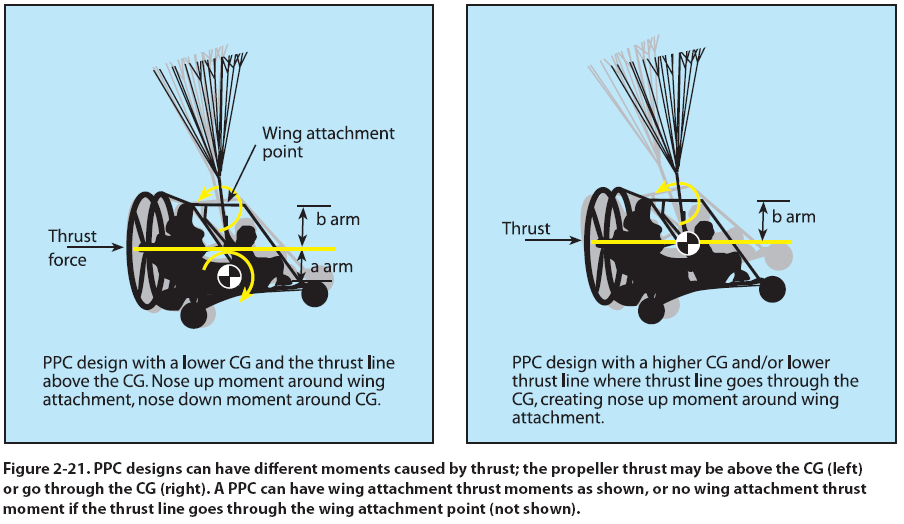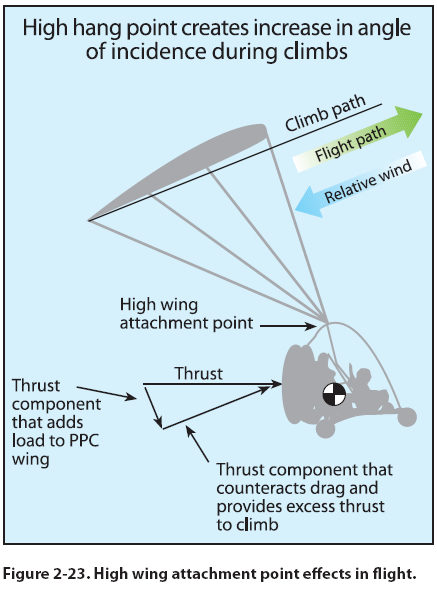Chapter 2 - Aerodynamics of Flight
Thrust Line Moments
PPC designs can have different moments caused
by thrust; the propeller thrust may be above the
CG (Figure 2-21 left) or go through the CG (Figure
2-21 right). Since the cart swings free in pitch, this
CG thrust moment can slightly affect the pitch of the
cart in relation to the wing.
PPCs with an attachment point above the thrust line
have a pitching nose up moment as shown in Figure
2-21 (both diagrams), with a thrust line, wing attach
point, and arm “b.”

Gravity Moment
There is a moment arm from the CG of the cart,
to the cart/wing attachment (see “arms” in Figure
2-22). The longer the distance from the CG to the wing attachment point, the more stable the cart pitch
is from thrust moments. The higher the wing attachment
point above the CG, the more stable the cart is
from swinging underneath and the less the cart will
pitch up when thrust is applied.

A higher hang point will also better stabilize the PPC
cart in turbulence because the moment of the weight
and the larger “d” arm creates a larger stabilizing moment.
[Figure 2-22]
For ground operations, the moment arm distance “c”
cannot be too great or the front wheel would lift off
the ground prematurely, trying to inflate the wing (see
right side of Figure 2-22).
During flight, the advantage of a high attachment
point arm “c” is less swinging around of the cart under
the wing, and less cart “pitch up” when throttle is
applied to climb. This high attachment point creates
thrust that is now pointed slightly down to the relative
wind, which has two significant effects. First, it
creates a negative P-factor, counteracting increased
torque. The second effect is a disadvantage: less climb
rate or more thrust required for the same climb rate.
This is due to the increased load on the wing from the
thrust, requiring more speed and/or angle of attack to
lift the total load. [Figure 2-23]

Wing Attachment to Cart
If flying straight and level over a perfectly flat landing
strip, then with the rear wheels 1 inch above the runway, the nose wheel should be between 7 and 11 inches
above the pavement. The POH specifies the wing
fore and aft wing attachment points to the cart. [Figure
2-24] Attaching the wing too far forward would
cause the nose wheel to be higher than it should. Attaching
the wing too far back would place the nose
wheel too low, where it would hit first for landings.
Balancing the cart properly per the POH is important
to make sure the cart is hanging properly under the wing and ensure thrust is properly aligned as designed
by the manufacturer. Nose wheel low means thrust
pointing down, increasing loads, and airspeed. Nose
wheel high has the opposite effect. Thrust aligned too
high or too low results in reduced thrust and unwanted
P-factor.

Manufacturers must balance the cart stability for takeoff
and flight, along with the thrust moment to achieve
the best design for the specific application.
|

